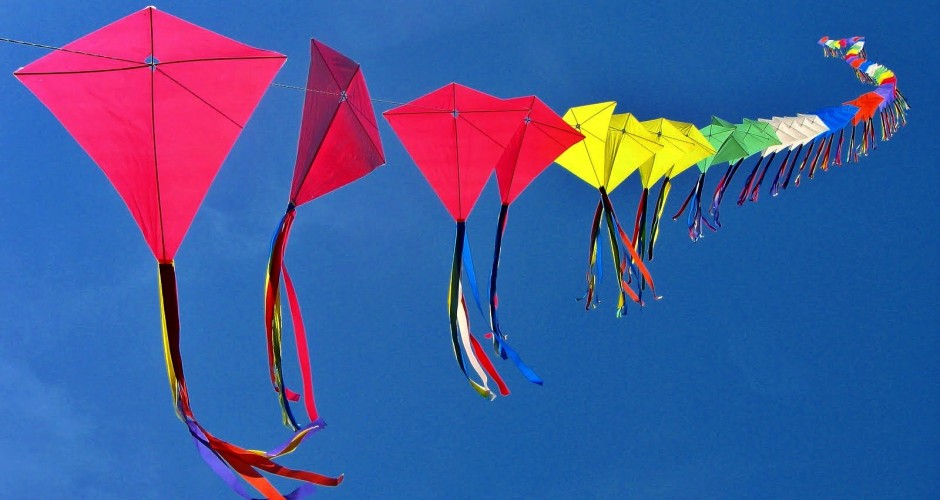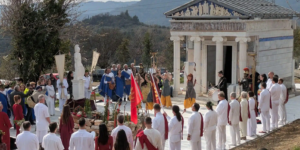When the sun changes direction from one constellation of the zodiac to another, it is known as Sankranti. There are 12 Sankrantis in a year, of which Mesh (Aries) Sankranti, when the solar year begins, and Makar (Capricorn) Sankranti, when the sun begins its northward journey from the Tropic of Cancer, are of primary importance. The transition of the Sun from Sagittarius to Capricorn during the winter solstice in the northern hemisphere (Uttarayana) is known as Makar Sankranti.
Sankranti means conjunction and also to change direction, move from one place to another. On this day, especial importance is given to bathing in the Ganga and to worshipping the sun. Many melas, like the annual Magh mela at Ganga Sagar and at Allahabad are attended widely. In 2013, and every 12 years, Makar Sankranti assumes particular significance, because it marks the beginning of the auspicious Mahakumbha at Prayag, Allhahabad, held every 12 years, when millions congregate for the largest gathering on earth.
Celebrated as a harvest festival, because rice and lentils are used to make khichdi, and til or sesame seeds used in the preparation of sweetmeats, it is also known as khichdi sankranti or til sankranti. It is celebrated as Lohri in Punjab and Himachal Pradesh. It is known as Pongal in Tamil Nadu, it begins with Surya Pongal or worship of the sun. Here, it marks the harvesting of corn which is cooked. In Karnataka it is called ellu-Bella’. Yellu means sesame seeds and Bella is jaggery. In Uttarakhand it is referred to as Uttarayana.
In Assam, the festival is celebrated as Bhogali Bihu. In many parts along the coast, it is celebrated as a harvest festival dedicated to Lord Indra, who rules the heavens and is the god of rain. On this day, the entire skyline is a blaze of many coloured kites, flying gaily at different levels according to the skill of the kite-flier, and his ability to soar upwards past the many rival kite-fliers intent on cutting the string of his kite through fierce kite-fights. It is easy to appreciate that the prospect of lengthening days and the hope of spring in the cold of winter is naturally uplifting.
According to the Puranas on this day Surya (Sun) visits the house of his son Shani (Saturn), who is the Lord of Makar Rashi (Capricorn) for a month. It is a reminder of the special relationship between father and son.
The bond of Raksha Bandhan The six months of Uttarayana is regarded as a single day of the devatas or gods and considered auspicious, while dakshinayana is said to be the night of the gods. It is said that on this day Lord Vishnu ended the ever increasing terror of the asuras or demons by killing them and burying their heads under the Mandara Parvat. So it represents the end of negativities and the beginning of an era of righteous living.
Maharaja Bhagirath did tapasya to bring the sacred Ganga to earth for the redemption of his ancestors, sons of Maharaja Sagar. They had been burnt to ashes at the Kapil Muni Ashram at Ganga Sagar when they had disturbed the sage in his deep meditation with false accusations of theft. It was on this day that Bhagirath finally did tarpan with the waters of the Ganga and redeemed his ancestors from the curse of Kapil Muni. Tarpan for ancestors is done on this day, as well as snan in the river Ganga, particularly at Ganga Sagar.
Yet another reference to the day is that Bhishma Pitamah of the Mahabharat chose to wait on a bed of arrows to leave his body on this day, because it is particularly auspicious. It symbolises the beginning of a journey to higher realms.
Swami Sivananda had said, “To Hindus, the sun stands for knowledge, spiritual light and wisdom. Makara Sankranti signifies that we should turn away from the darkness of delusion in which we live, and begin to joyously let the light within us shine brighter and brighter. We should gradually begin to grow in purity, wisdom, and knowledge, even as the sun does from this day. In fact, the sun itself stands for all the ideals of the Pongal festival. Its message is that of light, unity, equality and true selflessness.
These are the ideals of Karma Yoga….Share what you have with all this is the clarion call of the Pongal festival…During this holy festival we learn to feel our oneness with all creation; we learn to be unselfish and to tread the path of love, purity and forgiveness. We learn that our real wealth is the goodwill and friendship of those around us, the land on which our food grows, and the animals that help to make our work lighter.”
by Romola Butalia





























